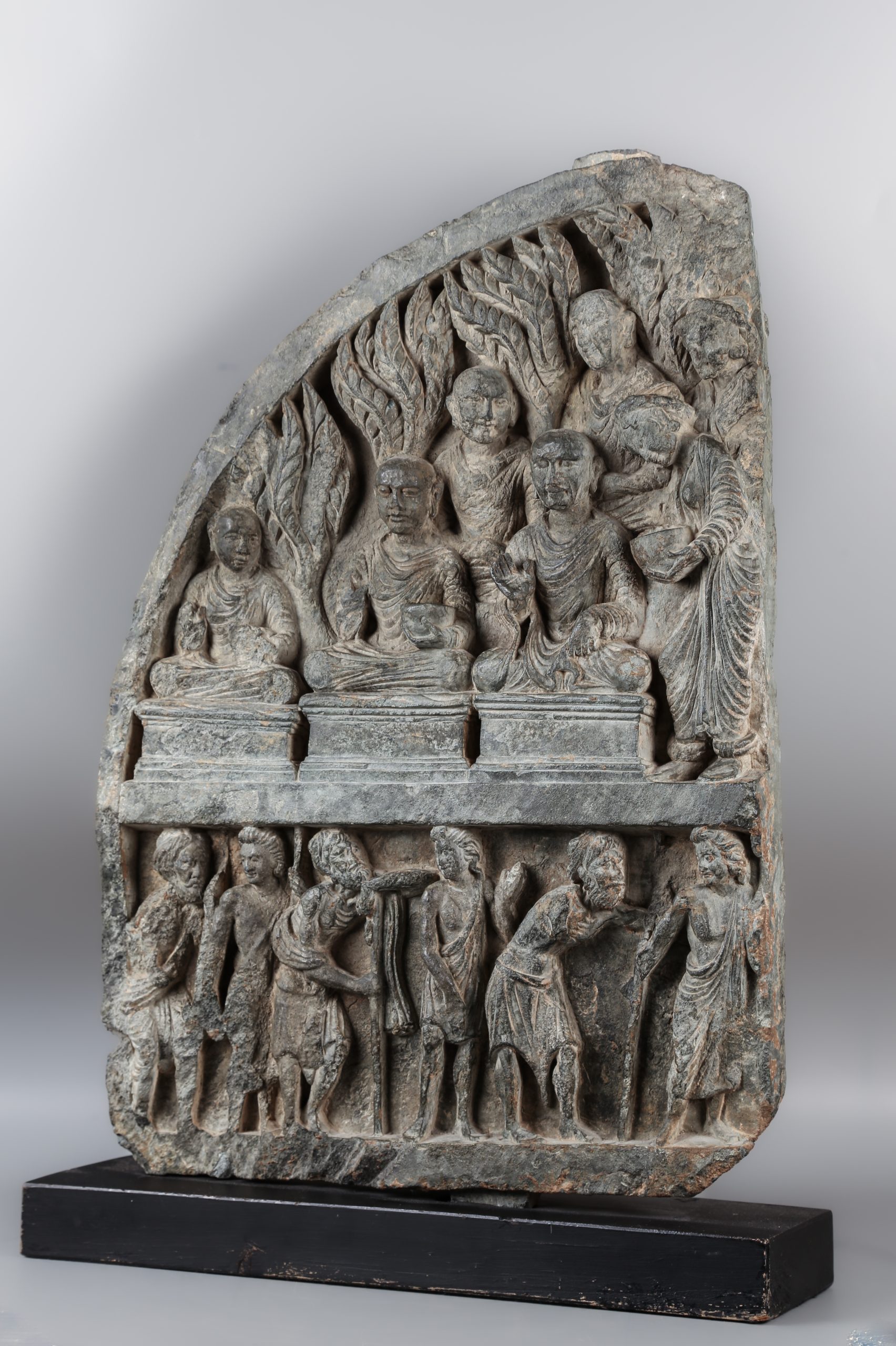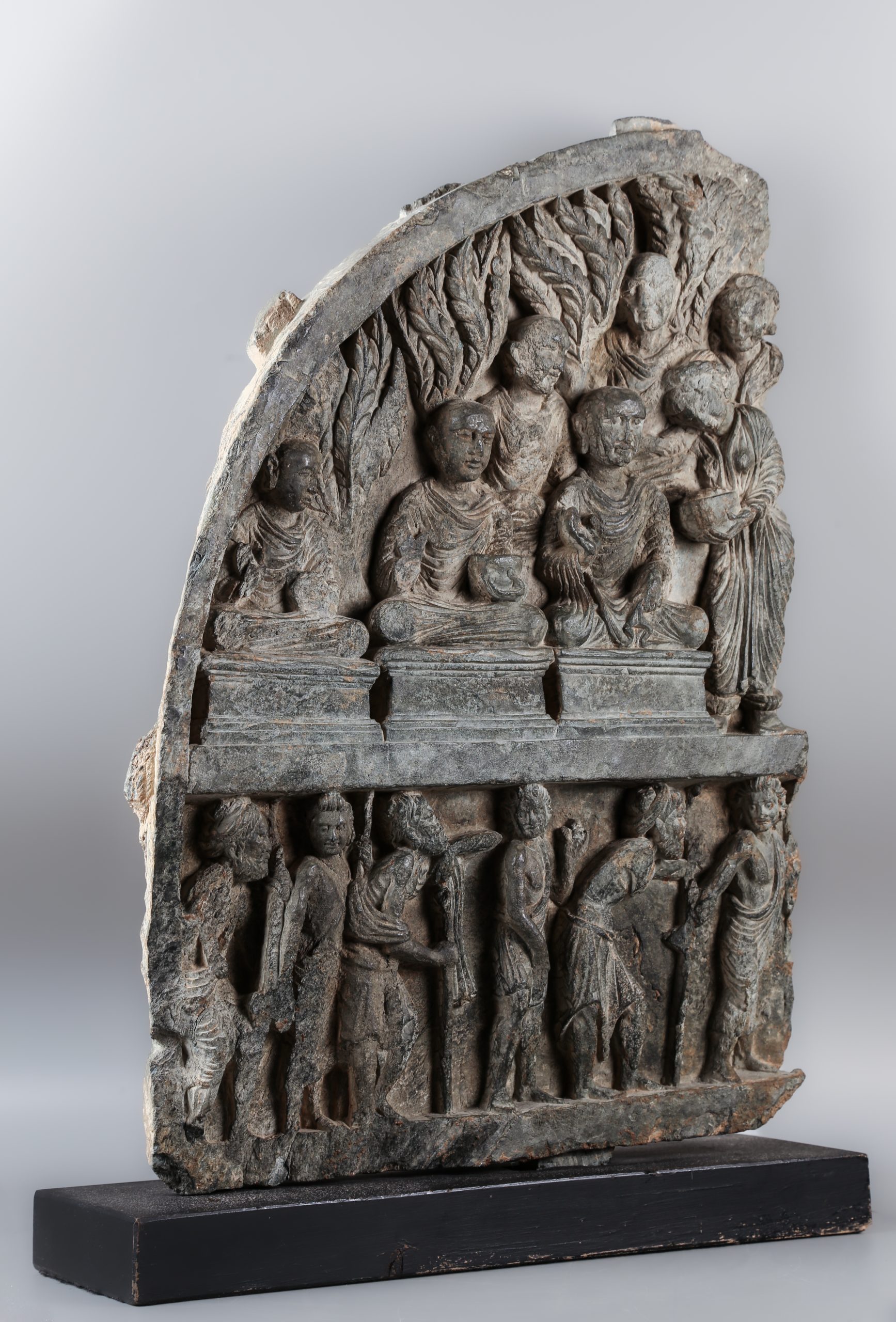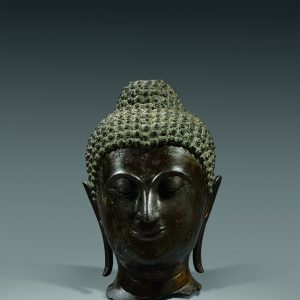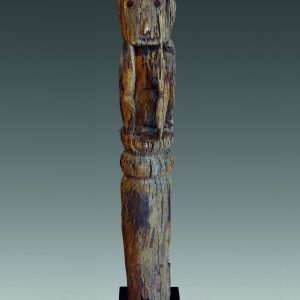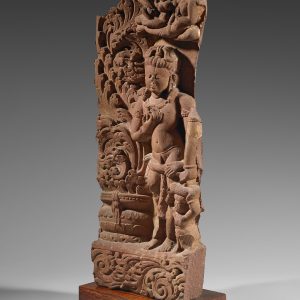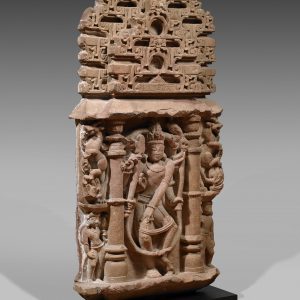Monk’s relief
Schist
3rd century
Gandhāra
H. 52.7 cm L : 40 cm
Description
Around the first century AD, Buddhism spread westwards, encouraging the development of monastic centres, where art illustrating the wonderful life of the Buddha flourished, with stylistic influences from neighbouring regions or further afield. The figures on this fragment fully reflect this association, combining Indian Buddhist art with the arts of Central Asia and the West.
This fragment of high relief in the form of an arch probably decorated a stūpa, a monument symbolising Buddhist law. This schist sculpture is divided into two registers.
On the right-hand side of the upper register appear two women, dressed in drapery that delicately envelops their bodies. With their protruding breasts, slim waists and wide hips, these female figures are reminiscent of Mathurā, whose full, exaggerated forms reflect femininity. Adorned like Indian women, they wear thick anklets and heavy earrings. Their elaborate hairstyles, encircled by a headband, let a few strands of hair fall over their foreheads. Laden with offerings, they walk towards a small group of five monks, occupying most of the composition. Elevated on a pedestal, the monks adopt a meditative position, their right hand forming the Abhaya mudrā, a gesture of protection and absence of fear, with the palm facing forward as a sign of appeasement. The left hand receives offerings in a bowl. The group is sheltered by large sal tree foliage.
In the lower register, six figures walk towards the right, one after the other. Three men, with bent backs and incised ribs, lean firmly on a stick. Their beards and long hair suggest that they are ascetics. The other three men stand out for their youthful appearance and confident, vigorous posture. They are young devotees, with bulging muscles, short curly hair and shaved beards that correspond to the masculine canon of Hellenistic art.
Few reliefs are known in which devotees, ascetics and monks are depicted together. The rest of the relief could, in all coherence, house the Teaching Buddha, the figures above sharing this cult of Buddhist Law, practised differently according to their status.
Provenance : Sotheby’s New York, 2005, and then the Rapoport Collection (by repute).

